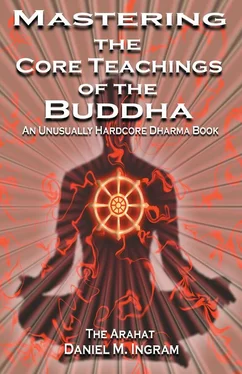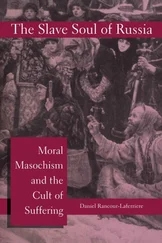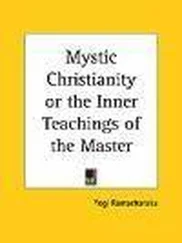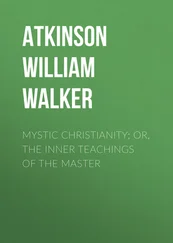Daniel Ingram - Mastering the Core Teachings of Buddha - An Unusually Hardcore Dharma Book
Здесь есть возможность читать онлайн «Daniel Ingram - Mastering the Core Teachings of Buddha - An Unusually Hardcore Dharma Book» весь текст электронной книги совершенно бесплатно (целиком полную версию без сокращений). В некоторых случаях можно слушать аудио, скачать через торрент в формате fb2 и присутствует краткое содержание. Год выпуска: 2009, ISBN: 2009, Издательство: Aeon Books, Жанр: Старинная литература, на русском языке. Описание произведения, (предисловие) а так же отзывы посетителей доступны на портале библиотеки ЛибКат.
- Название:Mastering the Core Teachings of Buddha - An Unusually Hardcore Dharma Book
- Автор:
- Издательство:Aeon Books
- Жанр:
- Год:2009
- ISBN:9781904658405
- Рейтинг книги:5 / 5. Голосов: 1
-
Избранное:Добавить в избранное
- Отзывы:
-
Ваша оценка:
- 100
- 1
- 2
- 3
- 4
- 5
Mastering the Core Teachings of Buddha - An Unusually Hardcore Dharma Book: краткое содержание, описание и аннотация
Предлагаем к чтению аннотацию, описание, краткое содержание или предисловие (зависит от того, что написал сам автор книги «Mastering the Core Teachings of Buddha - An Unusually Hardcore Dharma Book»). Если вы не нашли необходимую информацию о книге — напишите в комментариях, мы постараемся отыскать её.
Mastering the Core Teachings of Buddha - An Unusually Hardcore Dharma Book — читать онлайн бесплатно полную книгу (весь текст) целиком
Ниже представлен текст книги, разбитый по страницам. Система сохранения места последней прочитанной страницы, позволяет с удобством читать онлайн бесплатно книгу «Mastering the Core Teachings of Buddha - An Unusually Hardcore Dharma Book», без необходимости каждый раз заново искать на чём Вы остановились. Поставьте закладку, и сможете в любой момент перейти на страницу, на которой закончили чтение.
Интервал:
Закладка:
They can also begin to blur the line between the “mental” and the
“physical” in ways that can be both disorienting and profound.
When we start playing around with intentions, extended sensate realities and energetic phenomena, it can seem as if there are two worlds or fields of experience that interpenetrate each other, the ordinary one (“the real world”) and the magical one (“second attention,” “astral plane,” “spirit world,” etc.). Integrating these two perspectives into one causal field without artificial dualities or boundaries is quite a project, one with the potential to lead to very high levels of realization or to madness. It is the high-stakes way to play the game, but unfortunately seems to be largely unavoidable past a certain point.
The experiences of the powers can help people live in the world in a way that is at once appreciative of its richness and yet not overly serious about it or fixated on it. At their best, they can serve as a basis for a very deep exploration of sides of ourselves that we rarely see with such clarity, particularly the territory detailed by the likes of Jung and the Shamanic traditions. Occasionally, such experiences can bring profound epiphanies, times when we see our issues and shadow sides so clearly that our lives are definitely transformed for the better.
While this next point might sound a bit radical, there are good reasons to assume that we are all acting at what might be considered a magical level all the time and just doing it with little awareness of that fact. The best argument I know of for learning how to work at the level of the powers is to bring consciousness and compassion to a process that is happening already. Said another way, as we are already casting spells all the time, actually any time there is awareness and intent, we might as well learn to do it well.
148
The Concentration States (Samatha Jhanas)
On the other hand, playing around with siddhis can bring up really screwed up stuff from our subconscious that we are just not ready or able handle skillfully, causing “siddhi bleedthrough” into our lives that is simply unhelpful and very hard to integrate. Actually, when playing around with any meditative technology, there is no free lunch. You always end up being forced to face some further challenge having to do with personal or spiritual growth, either then or shortly thereafter.
There doesn’t seem to be any getting around this.
If you want to cultivate the siddhis, one must generally attain very
“hard” jhanaic states with the specifically intention to attain these experiences, though they can and often do arise spontaneously as well.
The
Visuddhimagga and The
Vimuttimagga (less encyclopedic and
harder to find but much more readable) both spell out how to attain
“psychic powers” in great depth and detail. You could also check out Bhante Gunaratana’s excellent work, The Path of Serenity and Insight.
Simply follow the directions and explore, as they are as accurate it gets.
One should also see Sutta #2, The Fruits of the Homeless Life, in The Long Discourses of the Buddha, for more information on all of the concentration states and psychic powers.
While magical or mythical thinking is generally very unhelpful on the spiritual path, it must be admitted that it is the only kind of thinking that can make much sense of these sorts of experiences. However, know when to turn it on and when to shut it off. If you are doing Jungian psychotherapy, shamanic pathworking, working up the Tree of Life or through the Tarot, or similar work, think as magically and mythically as you wish. It might actually be very helpful. If you are trying to do most other things, don’t!
While Theravada Buddhism clearly states how to obtain the
“psychic powers,” it does not say much about how to use them, the benefits of them, or their dangers. Tantra and many other traditions (such as some of the shamanic traditions) do a much better job of dealing with these. One might also check out the later writings of Carlos Castanada when he was not so fascinated with hallucinogens (such as The Art of Dreaming), go to an ashram that focuses on these aspects of spiritual training, or check out traditions such as Ceremonial Magick, Wicca, Thelema, the Golden Dawn, and the A.’.A.’..
149
The Concentration States (Samatha Jhanas)
Note, I will use the word magick with a “k” at times due to being influenced by this and related traditions, as they advocate making a distinction between show magic (illusions based on mechanisms and slight of hand) and the territory of the powers or real magick. Donald Michael Kraig’s Modern Magick is a classic on the subject, as are the works of Aleister Crowley. Opinions on Crowley vary widely, but buried in his frustrating works is gold that is hard to find elsewhere. Despite all his quirks and failings, I have a deep appreciation for many synchretic aspects of his work and the depths of his dedication to making meditation and magick accessible.
It is also possible to use the experiences of the psychic powers, particularly the visions and traveling out of body, as a basis for insight practice by the standard method of bare sensate investigation with a focus on the Three Characteristics of those sensations, as they arise out of extremely high levels of clarity and concentration. These experiences can also be so otherworldly in content that our normal fixations and preoccupations may be left behind. Experiences of insight in these realms can be staggering and awesome. They are not soon forgotten.
Tantric visualization practices at their best make powerful use of this fact. By definition, if you have visualized a 3D intelligent entity that is doing its own thing, you are in strong concentration in the fourth jhana and it is just a question of seeing the Three Characteristics of that to get some serious insight.
“Psychic powers” can also arise spontaneously from insight practice, particularly at stage 4. The Arising and Passing Away and sometimes at stage 11. Equanimity (see The Progress of Insight later). While the fourth jhana is traditionally said to be the basis for the psychic powers, simply getting so strongly into the first jhana that you can no longer perceive a body coupled with the previous intention to have these experiences can sometimes be a sufficient to make them occur. Get really into the jhana, leave it, resolve to have these experiences, and see what happens. Repeat as necessary. If that doesn’t work, learn to visualize the colors white, blue, red and yellow clearly as stable experiences and then repeat the above instruction. If that doesn’t work, find the rare teacher who will actually guide you into this esoteric territory. Better, find a good teacher before getting into this territory!
150
The Concentration States (Samatha Jhanas)
If all of that is not enough, here is my best advice for working with the powers formally. Once you have enough concentration to get into hard fourth jhana with a range of objects and colors, here’s traditional Buddhist Magick 101 with some practical points thrown in:
1. Make the bases clean, meaning bathe quietly and put on clean clothes. This instruction helps but is not necessary.
2. Find a suitable place to work, meaning a place that is quiet and free of distractions. If you can’t find such a place or you feel compelled to do magick in less than optimal circumstances
(such as in public on the fly), obviously skip this step.
3. Think the whole thing through before you proceed. Never, ever skip this step if you can possibly help it. This step not only helps to keep you from seriously screwing up, it is actually part of the spell and a very important part of the set-up. Essential things to include are:
Читать дальшеИнтервал:
Закладка:
Похожие книги на «Mastering the Core Teachings of Buddha - An Unusually Hardcore Dharma Book»
Представляем Вашему вниманию похожие книги на «Mastering the Core Teachings of Buddha - An Unusually Hardcore Dharma Book» списком для выбора. Мы отобрали схожую по названию и смыслу литературу в надежде предоставить читателям больше вариантов отыскать новые, интересные, ещё непрочитанные произведения.
Обсуждение, отзывы о книге «Mastering the Core Teachings of Buddha - An Unusually Hardcore Dharma Book» и просто собственные мнения читателей. Оставьте ваши комментарии, напишите, что Вы думаете о произведении, его смысле или главных героях. Укажите что конкретно понравилось, а что нет, и почему Вы так считаете.












